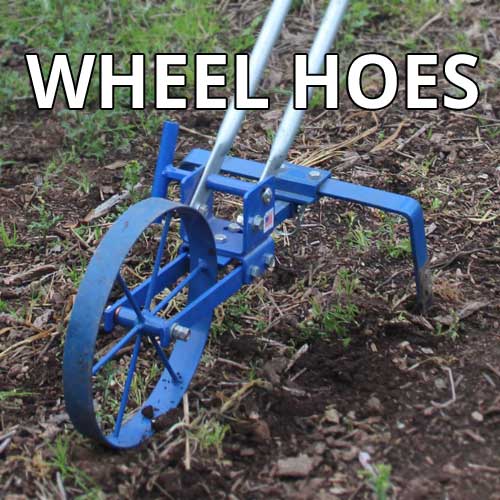Planting Bare Root Trees
Posted by David Grau on
Originally Posted on January 18, 2014
Welcome to the Valley Oak Tool Co Newsletter for late January.
We've been experiencing unseasonably warm temperatures in Northern California, and our entire state is experiencing a severe drought, while much of the rest of the country is trying to thaw out after a major cold spell. Our Pink Ume Apricot has already started blooming. It usually blooms in January, so it is right on time. We hope you have been able to keep warm.
Planting Bare Root Trees
It feels like springtime outside in Chico, and we need to remember that it is still winter, and therefore time to plant bare root fruit & nut trees, and berry canes, among other things. This year we ordered our bare root trees from Peaceful Valley Farm Supply. In past years we have ordered from Trees of Antiquity, Raintree Nursery, and One Green World. All three of these nurseries specialize in edible plants.
We have also purchased bare root trees from local nurseries, where the selection is often not as varied as one can get from a specialty nursery, but local nurseries are definitely worth checking out. Local nurseries will often special order trees if you contact them well ahead of the bare root planting season.
To plant our trees we pre-irrigated the planting locations a few days in advance of planting. This allows the soil to be moist (but not wet), making it easier to first broadfork the area to loosen the soil, and then dig the large basins necessary for planting trees. The nursery frequently sends instructions on how to go about planting the trees, whether to amend and fertilize the soil, and details about watering your trees once they are in soil.
Permaculture designers will often plant a selection of other plants, along with their trees, to make a guild. The aim of guilding the garden is to grow many different plants together to create beneficial interactions (the sum is greater than its parts). Plants for the guild include dynamic mineral accumulators, those which attract beneficial insects, culinary and medicinal herbs, and nitrogen fixing plants that can be cut and used as mulch around the tree (e.g. comfrey).
Giving the trees a little root competition will also prevent them from growing too large too quickly. We like to plant yarrow, comfrey, thyme, and strawberries when we plant our trees. When the soil temperatures rise to around 50ºF, we'll sow seeds of buckwheat, clover, and parsley. Once the soil warms even more, we'll plant climbing beans, which will help shade the young trees from hot sun, and also produce an edible crop in the summer.
For more information on growing fruit tree guilds, Toby Hemenway's book Gaia's Garden has extensive options in its pages.
Sprinkler Spike from Valley Oak Tool Co
 Due to a serious lack of rain in our area, we've been using our Sprinkler Spike to irrigate our gardens. The Sprinkler Spike has two prongs to get a good grip on the soil, which keeps it from falling over, even while water soaks the soil around it. We designed the Sprinkler Spike so it would not fall over when using a riser with a pop-up rotary sprinkler head (as shown in the photo to the right).
Due to a serious lack of rain in our area, we've been using our Sprinkler Spike to irrigate our gardens. The Sprinkler Spike has two prongs to get a good grip on the soil, which keeps it from falling over, even while water soaks the soil around it. We designed the Sprinkler Spike so it would not fall over when using a riser with a pop-up rotary sprinkler head (as shown in the photo to the right).
The Spike works with either a riser, or at ground level, by simply inserting the sprinkler head of your choice into the threaded opening. We also designed it so the spikes would not break off under normal use. We were frustrated with those pot metal spikes from the hardware store bending and breaking with less than a season of use. Our Sprinkler Spike stays where it is supposed to, and has welded steel spikes for strength and durability.
Until next time, we wish you the best for your growing season.


